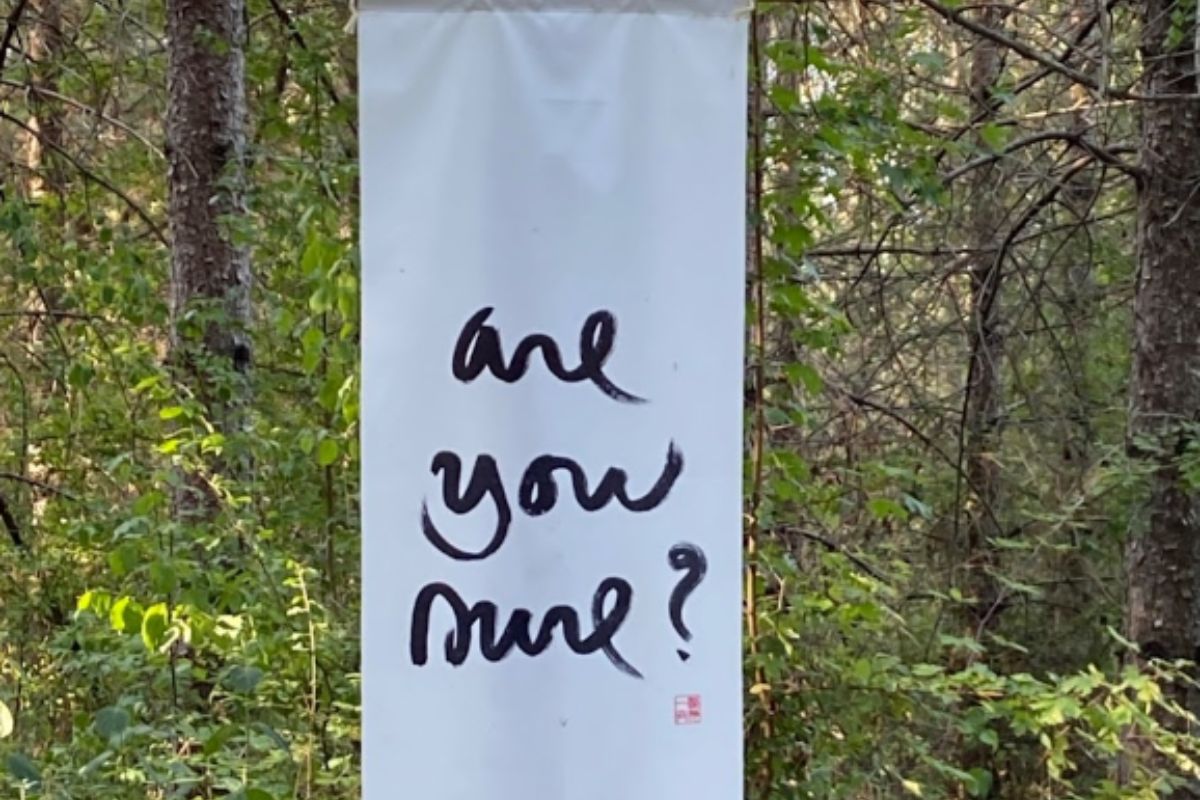Three more lessons from a meditation retreat at Plum Village Monastery.
I take retreats at least twice a year as a way to reset my physical body, reduce stress, and remember what is most important to me as a therapist, parent, and partner.
In my last post, I shared three lessons from a retreat at Plum Village Monastery with my family:
- Lesson 1: I have arrived, I am home.
- Lesson 2: Happiness is here and now.
- Lesson 3: There is no need to hurry.
Here I share three more lessons from a meditation retreat at Plum Village Monastery that you can do at home.
Lesson 4: Ask, Are You Sure?
When I arrived at Plum Village, my mind was a bit of a mess. It was full of emails I hadn’t returned, worry about what was to come next, and self-criticism.
With daily practice, I became increasingly aware of my mind and its tricks. I learned to pause and ask, Are you sure? This is similar to the cognitive defusion practice I teach from ACT. The more I asked, “Are you sure?” the more freedom I gained freedom from my automatic thinking patterns. I began to see my mind as a storytelling machine and learned to stay present with reality rather than following its well-worn tracks of worry and judgment.

My mind: I have to get this thing done so I can get to the next.
Me: Are you sure?
My mind: My kids are annoying people and need to be quiet.
Me: Are you sure?
My mind: It’s easier to do it myself.
Me: Are you sure?
There is a lightness that comes when you realize that your thoughts are not always true. Cognitive defusion is an effective strategy for emotional arousal and distress. You don’t have to change your thoughts; just give space to them.
How to Practice Cognitive Defusion:
- Notice your mind’s rules, judgments, and chatter
- Pause and ask, “Are you sure?”
- Don’t challenge your thoughts; instead, get space from them.
Lesson 5: Let Your Work Be of Service
Plum Village is a working monastery, not a spa vacation. The dwellings are campsites or simple buildings. You do your own dishes, and everyone participates in working meditation. Some families are designated to care for the garden, others to chop vegetables, and some to clean toilets. Our family was assigned kitchen clean-up. After dinner, we sanitized plates and bowls for over 300 residents, took smelly compost to the bin, and mopped the floors.
We were instructed to see this work as a meditation, like all of our other practices—enjoy the process of cleaning a floor, consider the people who will eat from clean bowls tomorrow, and feel the community working together as one. According to the Buddhist sutras of the 4 Nutriments, when we tap into motivation and intention in this way, work can become nutrition for us. Motivated to serve a greater good, whether it’s scraping plates or writing treatment notes, we gain energy from work rather than being drained from it.
At home, I had burned out on clinical work, lost track of my motivation to serve, and felt drained most days. During work meditation, I learned a new way to rejuvenate by placing my attention on my values and aspiration to serve.
At the end of our service job, we would sing together:
Happiness is here and now
I have dropped my worries
Something to do, Somewhere to go
There’s still no need to hurry
How to Practice Working Meditation:
- Before starting work, choose an aspiration (intention) to focus on.
- Be of service and offer your full effort and attention.
- Focus on process over outcome.
- Sing or hum a tune that motivates you.
Lesson 6: Your Future Is Today
Thich Nhat Hanh died in Vietnam in 2022, but some of his ashes were sent back to be spread at Plum Village. My family had the honor of being part of the last ceremony to spread his ashes across the land.
I bowed before a nun and she placed a spoonful of ashes in my palm. I walked in silence, slowly, as I had learned saying, “Yes. Yes. Thank you. Thank you.” Bowing, I placed his ashes at the foot of an aspen tree. Thich Nhat Hanh’s continuation is now in that aspen tree, but also in me, in my children, in my future clients, and in the footsteps of the global mindfulness community.
Thich Nhat Hanh taught that there is “no birth, no death” but continuation. Our actions today continue into our future, and our actions in the past are present in our experiences today. When we consider climate change, racism, and political division, we can see how this moment came about, and know we have the power to change the future for our children by how we choose to act now.
Practice Your Future Now:
- Cultivate habits that will grow the future you want.
- Water the seeds in others that you want to grow.
- Honor your ancestors, teachers, and parents that are now in you
The true test of our lessons at Plum Village is how we apply them in our lives at home. Walking through the busy airport security line, I reminded myself to walk mindfully and smile at others. Opening my computer full of unread emails, I reminded myself that my work is my service. Before dinner each night, we ring a bell to remind our family of the preciousness of our time together.
The practices we learn on retreat are preparation for daily living. To hear more about my experience at Plum Village you can listen to this episode of Your Life in Process.

+ show Comments
- Hide Comments
add a comment